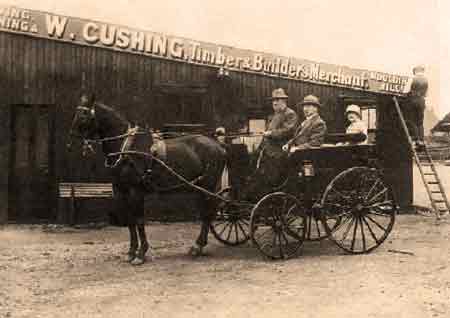Edmonton UK early-mid 20th Century: recollections and photos
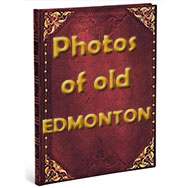
Edmonton is mentioned many times on this website because so many of the recollections stem from there. Just put Edmonton into the search box.
____
Sources of the photos
Some of the photos were in the effects of my mother. For the other photos I have had to rely on the generosity and recollections of visitors to the website, as I never lived in Edmonton myself.
Identification of the photos
I knew the locations of most of the photos in my family albums were well-known to me because my mother talked so much about Edmonton. Fortunately others were labelled on the reverse sides. The locations of those sent in by contributors were invariably labelled. I am glad to receive any amendments.
The photos with commentaries
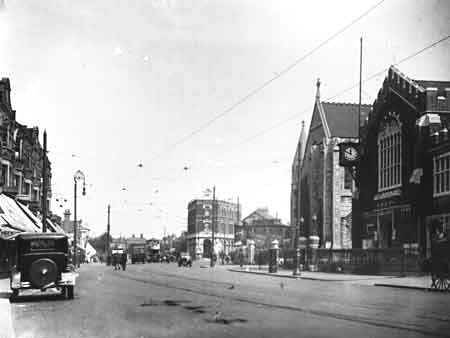
Tram Terminus, Town Hall Edmonton UK
The Independent Church next door,
on the right of the picture, no longer exists.
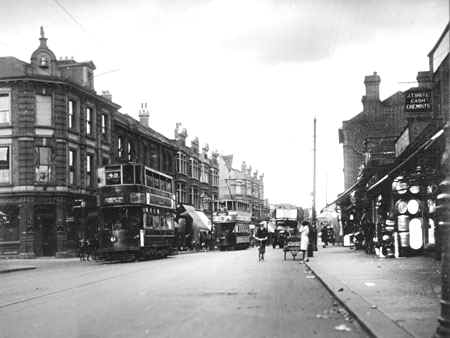
Fore Street, Edmonton UK
Fore Street ran from Edmonton Library, Lower Edmonton to Tottenham Boundary. Photo courtesy of Anne Davey form the effects of her mother, Ena Cole.
The yard of the Cushing Timber Mill, courtesy of Tony Curnock
William Cushing driving his carriage into the timber yard, c1912. The site ran from Fore Street to the railway line with Silver Street as its eastern border and College Gardens as the western border.
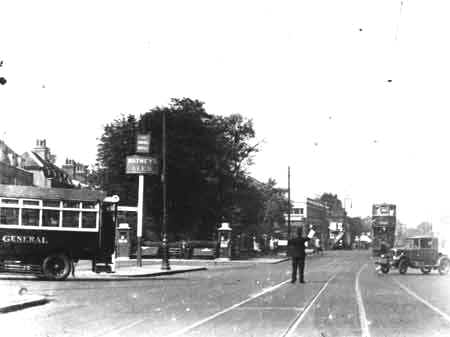
The Angel
The Angel Public House was on the corner of the Angel with the Regal Cinema opposite, just off Fore Street. (From the effects of my mother.)
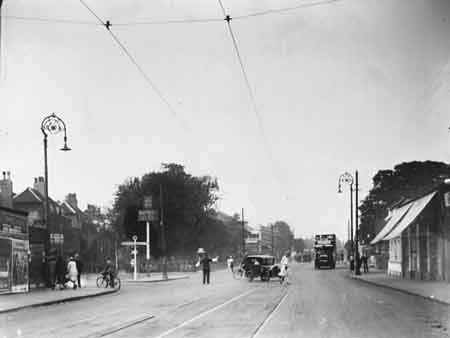
Angel Bridge and Place. (From the effects of my mother.)
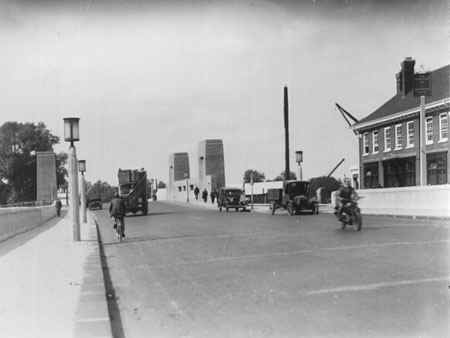
Lea Valley Bridge
It spans the River Lea, Angel Road, Edmonton. (From the effects of my mother.)
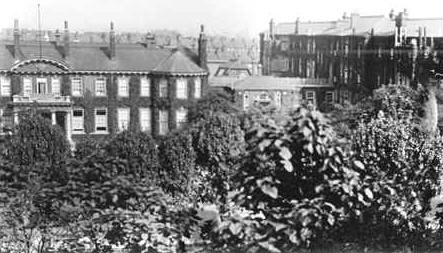
North Middlesex Hospital
It was a Military Hospital during World War One. My mother's grand uncle,
E. G. Cole, was awarded an MBE for services to the Military Hospital.
Photo in the effects of my mother.
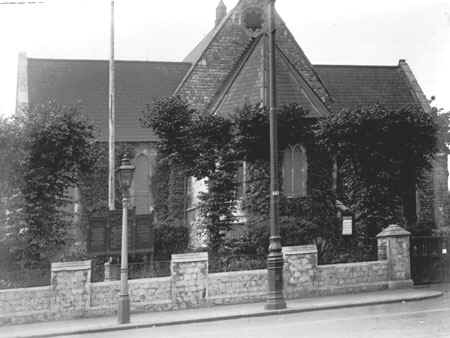
I had understood this to be St Edmunds Church, Lower Edmonton, opposite Bounces Road .Photo in the effects of my mother.
However, according to Cliff Raven it is St James Church in Fore Street Angel Edmonton,
and still stands although now (2011) converted to flats.
Pauline Bradford (formerly Pauline Mcginlay), confirms Cliff
Raven's interpretation. She points out that St Edmunds does not have the window in a flower
shape and was an older church. St Edmunds, she continues, is a more modern shape. The front wall is right too.
St James was built in the 1800s, whereas St Edmunds is
documented as having been built between 1900 and 1905.
Yet according to Bryan Llewellyn, who went to the church school in the late 1940s and early 1950s and was a member of the church choir for a few years, the photo is actually of the vicarage. The church itself is set back about 30 feet from the front wall, is next to the vicarage but off-screen. Off-screen on the right there used to be a small off-license. The school was way behind the church, even more to the left, and the school children were not allowed to walk through the church grounds past the church to get to Fore Street. There was also a huge garden behind the vicarage, extending all the way to the behind the school and connecting up with the unused area behind the school. If school children went into it they got spanked.
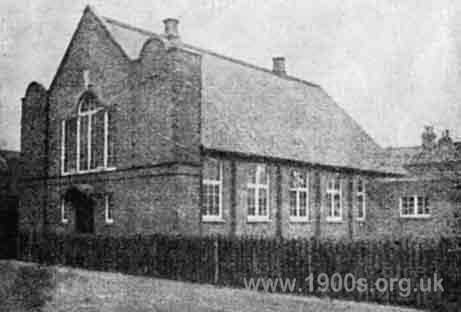
Tanners End Mission. Bull Lane, Edmonton
This was where my mother met my father, Leonard Clarke.
Photo from David Clarke, taken about 1938.
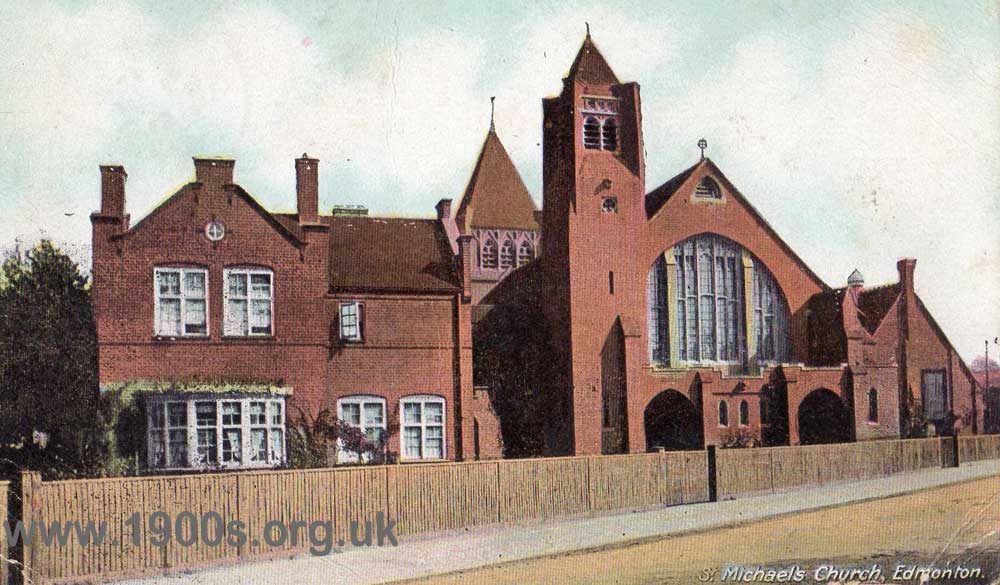
St Michaels Church, Edmonton. Photo courtesy of Tony Curnock
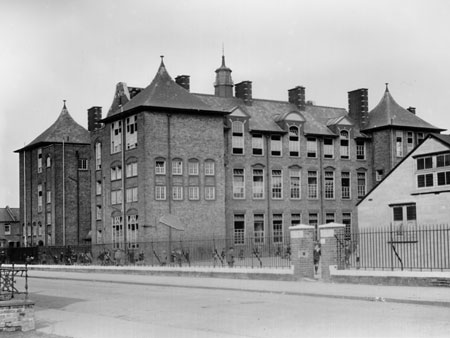
Raynham Road School which was off Angel Road in a square surrounded by Raynham Road, Avenue, and Terrace, and Woolmer Rd.
contributed by Keith Thompson
The above photo is of the rear of the school taken from the right-hand-side looking from the front of the building. The small white building in the foreground is the metalwork hut and behind that would have stood the woodwork hut. If you followed the road in the foreground to the right it would have lead you to the school sports ground and the school dinner canteen.
However, there is a difference of opinion ...
contributed by Roy Brimble
The wood and metalwork centres should be the other way round ie the woodwork centre is in the foreground and the metalwork centre is behind it. The metalwork centre was a relatively newer building than the woodwork centre which was a lot older. You went up a small flight of stone steps to enter the woodwork centre. I believe the timber was stored underneath the building.
I attended the school from 1946 to 1953. I'm pretty sure that in my time there was a domestic science centre adjacent to the woodwork centre, primarily for the girls to learn baking, cooking, cleaning etc. but I understand that the photo was taken some years earlier. There were two completely separate buildings on the site: one was the infants school, the entrance being in Woolmer Road, and the other was the juniors and seniors school to which there were several entrances.
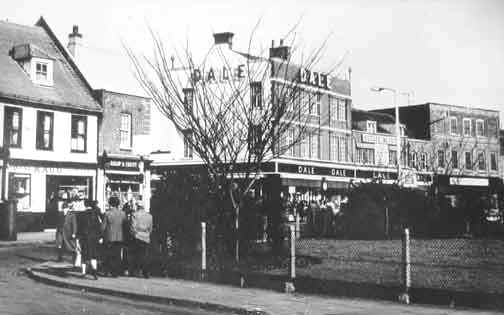
Edmonton Green, showing Wraggs the chemist, and Dales department store
Found in the effects of Ena Cole.
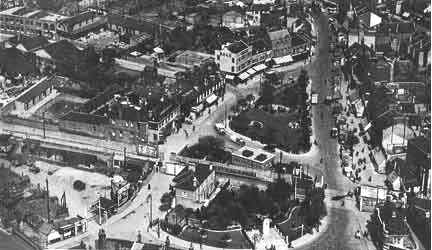
Edmonton Green
Aerial photo in the effects of Ena Cole.
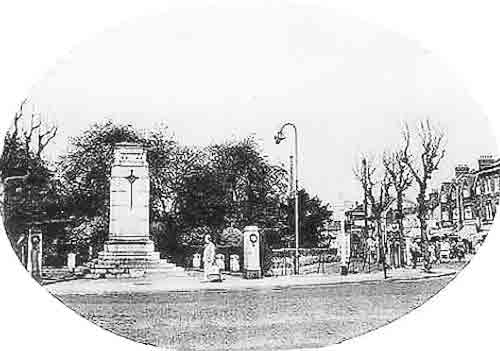
The Cenotaph, Edmonton Green
Photo courtesy of Frank Clarke - detail from a larger photograph, c1960.
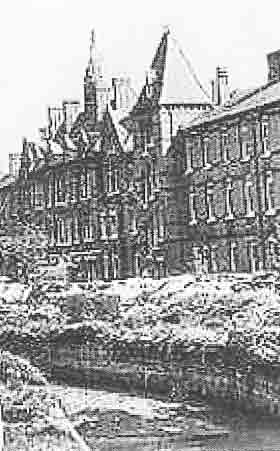
Klingers stocking factory, Edmonton c1960. Photo courtesy of Frank Clarke.
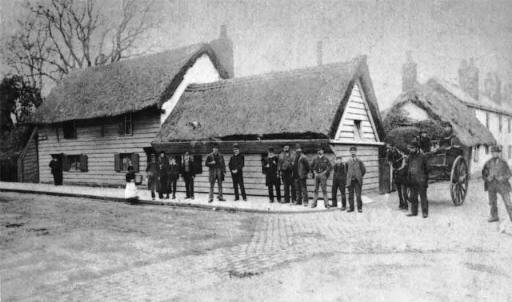
Church Street, Edmonton
The site of Lambs Institute, c1900. Photo courtesy of Brenda Noble.
By the webmaster’s mother, 1906-2002
There was an home for the disabled in Silver Street in a building called Millfield House, which was opposite Millfield Road. The patients wore a uniform of grey suits.
| sources | webmaster | contact |
Text and images are copyright
If you can add anything to this page or provide a photo, please contact me.


